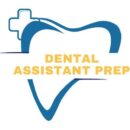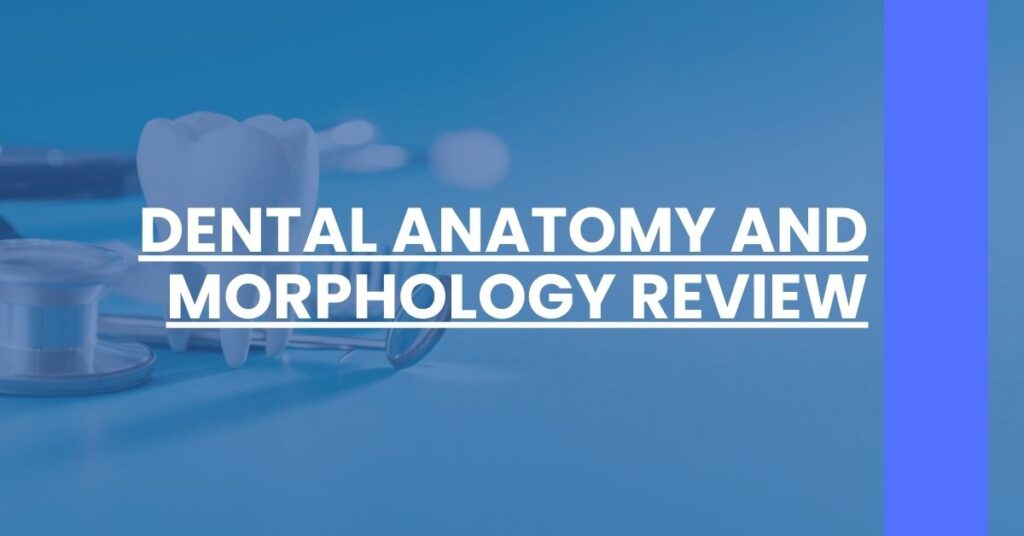Understanding dental anatomy and morphology is fundamental in dentistry. Here’s what you’ll discover in this comprehensive review:
- Critical Foundations of Dental Anatomy: Key concepts and terminology to bolster your knowledge in the field.
- Insights on Tooth Function and Morphology: Explore how the form of teeth dictates their crucial role in oral health.
- Implications for Dental Practice: How anatomy applies to dental diagnostics and treatments.
This dental anatomy and morphology review is your guide to mastering the essentials.
Introduction to Dental Anatomy and Morphology
Dental anatomy and morphology are foundational cornerstones in the field of dentistry, offering deep insights into the function and aesthetics of the oral cavity. Understanding dental structures is crucial for professionals performing diagnoses, creating treatment plans, and carrying out intricate procedures from restorative practices to orthodontics. This comprehensive review serves as a guide through the complex landscape of teeth, their arrangement, development, and the multifaceted roles they play in daily life—from eating to speaking.
Significance in Dentistry
Dental anatomy is not merely an academic subject; it’s intrinsically linked to practical dentistry. With a solid grasp of dental morphology, dental professionals can identify oral health issues, conduct preventive treatment effectively, and address emergency care with precision. The intricate knowledge of each cusp, groove, and arch is essential to crafting restorations that are not only functional but aesthetically pleasing to the patient.
Basics of Dental Anatomy
To tread the terrain of dental anatomy, one must first become conversant with its terminology and fundamental concepts. At the core of this knowledge are the different types of teeth – incisors, canines, premolars, and molars – each playing a distinct role in the oral environment.
Types of Teeth and Their Roles
The mouth houses various teeth specialized for specific tasks:
- Incisors: The front-most teeth, adept at cutting food.
- Canines: Pointed teeth ideal for tearing food.
- Premolars: Transitional teeth with both tearing and grinding capabilities.
- Molars: The workhorse of food grinding due to their broad, flat surfaces.
Landmarks of the Teeth
Understanding the topography of teeth is key to successful dental practice. Here are some important landmarks:
- Cusps: Pointed or rounded mounds on the crown of a tooth.
- Incisal Edge: The biting edge of an incisor or canine.
- Fossae: Depressions on the surface of a tooth.
- Pits: Small indentations where grooves converge.
Dental Morphology and Function
The design of each tooth is no accident; it’s a direct reflection of its function. Let’s unwrap the correlation between these two aspects.
Mastication and Tooth Form
Teeth are not only crucial in breaking down food mechanically but also in detecting texture and controlling jaw muscles during mastication. Their sharpness, curvature, and alignment all contribute to their effectiveness.
Aesthetics and Speech
Beyond mastication, teeth play a pivotal role in shaping our facial structure and in producing articulate speech. The frontal teeth, in particular, are instrumental in forming certain sounds and conveying expressions.
Dental Anatomy of the Anterior Teeth
As we venture into the world of the anterior teeth, we find a delicate balance between form and function. The incisors and canines, the hallmarks of our smile, are crafted for specific tasks while also serving a critical aesthetic purpose.
Incisors: The Frontline of Aesthetics
The central and lateral incisors are gatekeepers of our smile. Their shape significantly affects our appearance and is a defining factor in cosmetic dentistry.
Canines: Strength and Guidance
Far from just pointed teeth, canines guide the lower jaw in movement and contribute to a robust dental structure. They are often the last to wear down due to their resilience.
Dental Anatomy of the Posterior Teeth
Delving into the posterior region, the premolars and molars emerge as the fundamental grinders and crushers of the dental world.
Premolars: The Dual Role
With a more complex structure than the front teeth, premolars have attributes of both canines and molars, making them versatile in processing food.
Molars: The Powerhouses
Molars, with their broad surfaces replete with ridges, are specially designed for grinding food into tiny, digestible particles.
Occlusion and Dental Arch Dynamics
Occlusion refers to the alignment and contact of teeth when the jaws close. It’s a dynamic interplay that ensures the longevity of dental health.
The Ideal Occlusion
Proper occlusion involves teeth meeting in harmony with balanced force distribution, reducing wear and risk of temporomandibular joint disorders.
Dental Arch Form and Function
The dental arch is more than just a curve; it’s a finely tuned arena where teeth are strategically positioned to optimize function and stability in the oral cavity.
Variations in Dental Anatomy
Dental anatomy is as unique as a fingerprint, varying widely from person to person. These variations can be slight or substantial, and they often bear significant consequences for dental health and treatment.
Common Anomalies in Tooth Morphology
- Supernumerary Teeth: Additional teeth that can crowd the dental arch.
- Microdontia and Macrodontia: Abnormally small or large teeth, respectively, that can affect bite alignment.
- Fused or Geminated Teeth: When two tooth buds fuse together or a single bud attempts to divide, leading to unusual tooth shapes.
Implications for Orthodontic Treatment
Variations in dental anatomy can complicate or dictate specific orthodontic approaches. For example, supernumerary teeth might require extraction for braces to effectively align the remaining teeth.
Impact on Dental Procedures
An understanding of these anomalies is essential during dental restorations or surgeries, as they may influence the method and materials used. Each case requires a personalized approach to ensure the maintenance of oral function and aesthetics.
Developmental Aspects of Dental Structures
The development of dental structures is a meticulously orchestrated process that begins during embryonic stages and continues into adulthood with the eruption of permanent teeth.
Stages of Tooth Development
- Initiation Stage: The earliest stage where the basic blueprint of the dental layout is established.
- Bud Stage: The formation of tooth germ as a growth from the dental lamina.
- Cap and Bell Stages: When the cells begin to differentiate and the shape of the future tooth is formed.
- Apposition and Maturation Stages: The hard dental tissues are formed, and the tooth continues to mature until eruption.
Clinical Relevance in Pediatric Dentistry
Understanding these developmental stages is crucial in pediatric dentistry to recognize and address various dental diseases and developmental anomalies early on. It aids in taking proactive steps for maintaining a child’s oral health.
Practical Implications in Dentistry
In every aspect of dental care, from diagnosis to treatment, the contours and structure of teeth play a pivotal role.
Importance in Diagnostic Procedures
Dental anatomy knowledge directly impacts the ability to diagnose conditions accurately. For instance, recognizing the normal sulcus depth versus periodontal pocket depths is vital in diagnosing periodontal disease.
Significance in Preventive Measures
Preventive measures, such as sealants, are applied based on the morphology of the tooth. A deep understanding of dental anatomy allows for effective application and, hence, better protection against decay.
Role in Restorative Dentistry
For restorative dentists, replicating the original tooth structure is essential; a task only made possible through an intimate knowledge of dental anatomy. The reconstruction of occlusal surfaces, for example, depends on recreating the natural cusps and grooves that ensure proper mastication.
Technological Advances in Studying Dental Anatomy
Contemporary dentistry has embraced a myriad of cutting-edge technologies that facilitate the study and practical application of dental anatomy.
Advanced Imaging Techniques
Innovative imaging technologies such as Cone Beam Computed Tomography (CBCT) have revolutionized the way dental professionals visualize and interpret dental structures, providing 3D representations that are precise and informative.
Digital Dentistry and CAD/CAM
Digital dentistry has ushered in a new era of precision with CAD/CAM technologies. These tools allow for the design and creation of dental restorations that mirror the intricate details of natural dental morphology.
Importance of Dental Morphology in Forensic Science
Dental anatomy possesses a unique role in the domain of forensic science. Teeth, with their resilient nature and distinctive traits, often serve as crucial tools for human identification in forensic investigations.
Identification of Unidentified Remains
Teeth can withstand extreme conditions that may compromise other identifiers. Forensic odontologists rely on dental records and distinctive features in dental anatomy to aid in identifying unknown remains.
Age Estimation
Based on the wear and stage of development of dental structures, forensic experts can estimate the age of a person, which is particularly helpful when no other identifying information is available.
Conclusion: The Role of Dental Anatomy in Comprehensive Dental Care
In essence, dental anatomy and morphology are at the heart of understanding oral function and delivering high-quality dental care. The detailed study of dental structures not only underpins comprehensive diagnoses and tailored treatments but also drives the evolution of dental technologies and forensic sciences. This deep-seated knowledge, therefore, is invaluable to dental professionals as they strive to maintain and restore oral health in a manner that harmonizes function with aesthetics. Through this review, we’ve illuminated the critical aspects of dental anatomy that exemplify its central role in both the theory and practice of contemporary dentistry.

